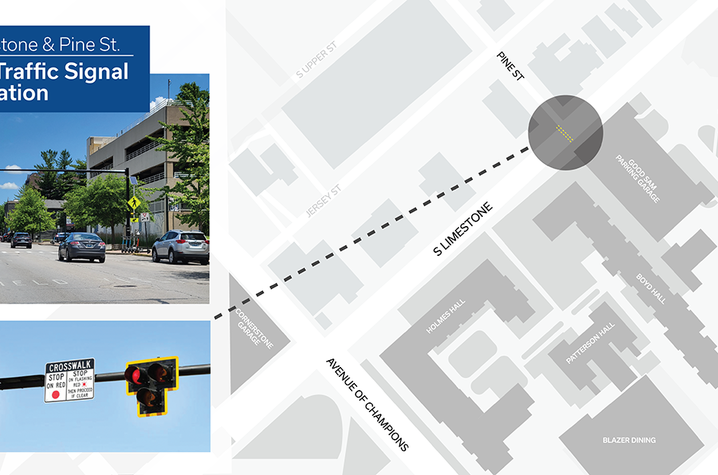New high-intensity activated crosswalk system installed on campus
LEXINGTON, Ky. (June 1, 2023) — The City of Lexington is upgrading the crossing signal on South Limestone at Pine Street to a High-Intensity Activated crosswalk (HAWK) system.
David Filiatreau, traffic engineering manager, said the HAWK system is expected to be activated on Thursday, June 1.
The High-Intensity Activated Crosswalk system is a traffic control device that helps pedestrians safely cross roadways at midblock crossings and intersections without a traffic light.
“Installing these types of pedestrian safety traffic control measures have reduced pedestrian crashes by 55% and crashes that result in serious injury or fatality by 15%,” says Scott Thompson, senior transportation planner.
Unlike an ordinary traffic signal, a HAWK signal appears to be offline until a pedestrian activates it. This allows vehicular traffic to proceed without stopping until someone needs to cross the street.
The signal flashes yellow as soon as it is activated, transitioning to a solid yellow shortly after. As with regular traffic lights, cars should prepare to stop as soon as they see yellow. The light will turn solid red, requiring cars to fully stop. The solid red light is followed by a flashing red light, meaning cars may proceed once the crosswalk is clear.
Pedestrians will see the same action indicators as a traditional traffic signal — wait, walk, don’t walk.
“The installation of a HAWK is a proactive approach to increasing pedestrian safety in our community,” said Traffic Engineering Director Jeff Neal.
As the state’s flagship, land-grant institution, the University of Kentucky exists to advance the Commonwealth. We do that by preparing the next generation of leaders — placing students at the heart of everything we do — and transforming the lives of Kentuckians through education, research and creative work, service and health care. We pride ourselves on being a catalyst for breakthroughs and a force for healing, a place where ingenuity unfolds. It's all made possible by our people — visionaries, disruptors and pioneers — who make up 200 academic programs, a $476.5 million research and development enterprise and a world-class medical center, all on one campus.






